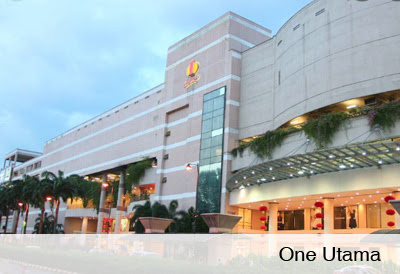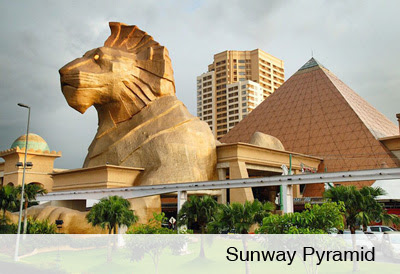Surprisingly, although we can almost purchase everything online, Malaysians still like mall shopping. In 2019, there is a total of 560 shopping malls nationwide, offering a total floor space of 135 million sq ft. The main attraction of shopping mall is that it provides consumers with experience beyond traditional shopping and online shopping. In addition, the increase in urbanization with more people living in smaller spaces makes for a greater need for public spaces for them to chill and hang around. Therefore, unlike regular commercial areas, the mall congregates more people and caters to more social activities in a cosy ambience.
Malls shouldn’t compete with the e-Commerce platforms to provide consumers endless product selection and price comparison. Instead, malls should stick to their nature towards a broadened value proposition for consumers. Nowadays, when e-Commerce is promoting the concept of O2O, online-to-offline, to form a new retail experience; likewise, many shopping malls are riding on the digital transformation trend to go the opposite of O2O, offline-to-online. According to McKinsey & Company, in its article, The Future of the Shopping Mall, Malls leverage technology to improve customer engagement in three ways:
First, extending their relationship with customers to pre-and post- mall visits through compelling content, social media and proprietary sites and apps, as well as loyalty points, customized offers, rewards, targeted advertisements. Secondly, malls are using technology to transform mall usability to improve customer satisfaction, for example, finding parking and thirdly, utilizing digital capabilities to uplift the shopping experience to the next level. Since there is no specific winning formula yet, mall players are encouraged to experiment with a clear mind on various business strategies to make something extraordinary happen.
The App can be an effective tool for malls to interact with customers; I focused mainly on App in this topic as the digital transformation platform discussed.
In fact, even though we have many malls, we only have a handful of mall Apps in Malaysia. I reckon the main reason would be the investment justification. App development costs much higher than maintaining a web portal or a social media platform like Facebook. Nonetheless, we can still find some established shopping malls in Malaysia that have launched their apps in recent years. Therefore, I chose and analyzed some mall Apps which illustrated in the table below:

I made a simple summary based on the comparison table as below:
All shopping mall apps list their merchants or brands.
Product listing is not vital for almost all mall apps because malls promote a physical shopping experience.
Almost all mall apps have loyalty points and reward to drive customers to spend in their malls.
Loyalty points also enhance the stickiness of customers to download and use their apps.
Almost all apps use snap and upload receipts to claim loyalty points; only two malls use the InStore payment system to gather customers purchase info and claim loyalty points.

*Sogo and Aeon are standalone shopping malls like Walmart; their apps are natural extensions from physical stores to online. Therefore, they should be considered different categories and compete more directly with an eCommerce platform.
**VivoCity is a Singapore Mall App just for comparison with Malaysia’s shopping mall apps.
I need to confess here that this is a superficial study on the features that showed in the Apps without detailed examination. Even if two apps have the same features, it doesn’t mean both equally provide full functions and deliver the same experience for users.
Marketing Modules Oriented
We can’t compare mall Apps with the full force eCommerce platforms such as Shopee Malaysia, Android download of 10 mil+, Mudah Malaysia 10 mil+, Shopback 10 mil+, and even Lelong has a 1mil+ downloads. The highest gross of 100K+ in user downloads for Sunway & 1 Utama Apps is just a mere 1% to some e-commerce giants. But like what I mentioned earlier, shopping mall apps have very different objectives; they are not competing with e-Commerce in the same marketplace.

In general, most shopping mall apps got the direction right by not turning themselves to compete with the borderless eCommerce app. Many of them do not even bother to list any products on the apps but perfect their shopper experience through loyalty points, promotion, and reward schemes. The loyalty point is also a system where the malls can collect buyers’ data for further analysis to understand their purchase behaviour better or lure customers to visit its store more often and spend more within its offline and online ecosystem.

But we can’t deny that many shoppers are not keen on the mall’s loyalty points and promotions. For example, the Sunway Pyramid shopping mall is one of the most popular shopping malls in the Klang Valley. It attracts about three million visitors per month but only gets 100K+ installations for its Android app. Therefore, we can conclude that for shoppers to enjoy better promotions and discounts on products, they would instead go to Shopee or Lazada, indulged by their consistently low price and product variety. Hence, shoppers who are not attracted by the bait of loyalty points would not burden their phone with an extra mall app or have an idle app without any actual usage.
Then, what are other attractions to make up a good mall app?
If eCommerce is borderless, reaching out to customers by its online portal and further supported by a robust backend logistic system. Then, the shopping malls and their app should focus more on near field commerce; the logic is that those who stay near the mall will visit the mall more frequently. Instead of marketing to strangers from thousands of miles away which you have difficulty exchanging anything valuable physically, you better get to know more about the neighbours around you. In short, enhancing the tie with the nearby community is relatively more important than taking care of the customers afar. And even if products need to be delivered to the nearby customers, it probably does not involve logistics. Unfortunately, none of the mall apps shows a solid near field commerce element built into their mall apps.
Strengthen Near Field Commerce Concept
Instead of becoming a supplementary general eCommerce platform, the mall app should enhance its Near Field Commerce capability, and this is what I concluded as one of the main objectives for the shopping mall apps. Contrary to the eCommerce of promoting borderless marketing regardless of distance, the Near Field Commerce championing short distance business activities, whereby the shorter, the better. It represents a mix of online and offline operations to connect buyers and sellers within the same geographical concerns. In a standard eCommerce platform, buyers are always treated as separate and simple individuals, while in Near Field Commerce, the community is one of the key considerations. When the community comes into the picture, there is a requirement to link the mall app with the community app. Thus mall app will appear to be part of the community system to achieve better interaction. Integration of a Near Field Commerce platform with a smart community platform is essential at the visitor management system level to facilitate services from the mall’s merchants. Since pre-registering visitors is almost a default built-in feature for a smart community app, the integration will smoothen the delivery process with a simple QR code scan at the guardhouse.
Imagine a physical store in a shopping mall with fewer buyers during weekdays. The merchant receives orders from the nearby residents and delivers the merchandise without hassle to boost sales and compensate for their loss during the slack time. Imagine an exhausted resident coming home from work. Will he/she shop at the nearby shopping mall or shop at the shopping mall app and get their items delivered to their doorstep in the evening? Imagine a resident can pick a few clothes from the app and later deliver and try them in their own house, and just buy the ones that suit them? And how easy and cost-effective to handle the returned merchandise compared with borderless eCommerce? These value-added features to the shopping malls are unachievable for a typical eCommerce platform.
Add More Operation Modules
Most mall apps aim to generate more sales without much success due to the lack of app activities.

The stickiness of an app is defined by how often and how long the duration you use the app. If an app is open once a year or once a month, the app is less applicable to the users. Besides marketing modules like loyalty points and promotions, can shopping malls add more operation features into their apps to increase their usefulness? How often does one use the mall App before, during and after the visit to the mall?
I take mall parking as an example. Smart parking is getting more popular nowadays, and it should consider a digital gateway for shopping malls, and integration with its mall app should be one of the essentials. Still, none of the apps efficiently embed this except Sunway’s Pals for Life App move towards this direction. The features can benefit app users in various ways. Before the visit for parking availability, check & book a bay; during the visit for parking discount (promo code) ties up with a purchase, or permanent free parking for premier customers, targeted ads, seamless touchless entry & exit parking lanes and auto-payment capability, EV charging, find my car, security camera surveillance linked to the parked car; and after the visit by printing the parking receipts.
For real estate developers with diverse development projects, the interaction and extension of activities between different user groups within an app are highly recommended. For example, imagine a township built with a mall, office towers, convention halls, hotels, theme parks, medical centre, school, residential and other property types; a super app to serve the community and public would be ideal, where it can contain more operation modules such as security, physical access, automation features to boost the app practicality.
In the digital transformation era, businesses can explore many more. The app journey is just the beginning for malls; watch TimeTec Digital Building Ecosystem and Smart Township Solution for more ideas.
View the PDF version here
For any developer who wants to know more about the TimeTec Digital Building or TimeTec Smart Township, please contact Mr. Aiden Teh at [email protected] (010-2211150), or Mr Mo Shuan Jin at [email protected] (017-3668891). Our general line and email: 03-80709933 and [email protected]. You can also write to us for consultation and presentation.
About Author

Teh Hon Seng, Group CEO of TimeTec Group of Companies. Prior to forming TimeTec, Teh led a tech start-up to be listed on the MESDAQ (ACE) market of Bursa Malaysia in 2002. Teh initiated the R&D in fingerprint technology in 2000, which later developed into a renowned global brand for commercial fingerprint products known as FingerTec. In 2008, he foresaw the trend of cloud computing and mobile technology, and over the years, he had strategically diversified and transformed its biometric-focused products into a suite of cloud solutions that aimed at workforce management and security industries including smart communities and digital building systems that centred around the cloud ecosystem. Teh has more than 20 patents to his name, and he is also a columnist in a local newspaper and a writer of several books.
About TimeTec
TimeTec Group was established in 2000. Over 20 years, the Group had developed three homegrown globally recognized IT brands, FingerTec, TimeTec and iNeighbour, for workforce management, security, smart office, smart residential and smart township solutions by unleashing the power of biometrics, cloud & edge computing, IoT and AI technologies. All these solutions connect and change the landscape of work life and home life in a larger ecosystem. Through a vast network, TimeTec Group distributes its biometric hardware products and 16 cloud applications, including IoT devices, to more than 150 countries worldwide. Visit our company websites: TimeTec Cloud, FingerTec, iNeighbour, TimeTec Building
Various renowned clients have subscribed to TimeTec various solutions including IOI Properties, Putrajaya Holdings, Ibraco, Binastra, Thriven, Hock Seng Lee, QSR Brands, Central Sugars Refinery CSR, Sunway Constructions, Mamee, Yakult, Nano Malaysia Berhad, and many more. The versatility and feasibility of TimeTec products also attract various international customers from all over the world, including Hong Kong, Dubai, Australia, South Africa and etc.

